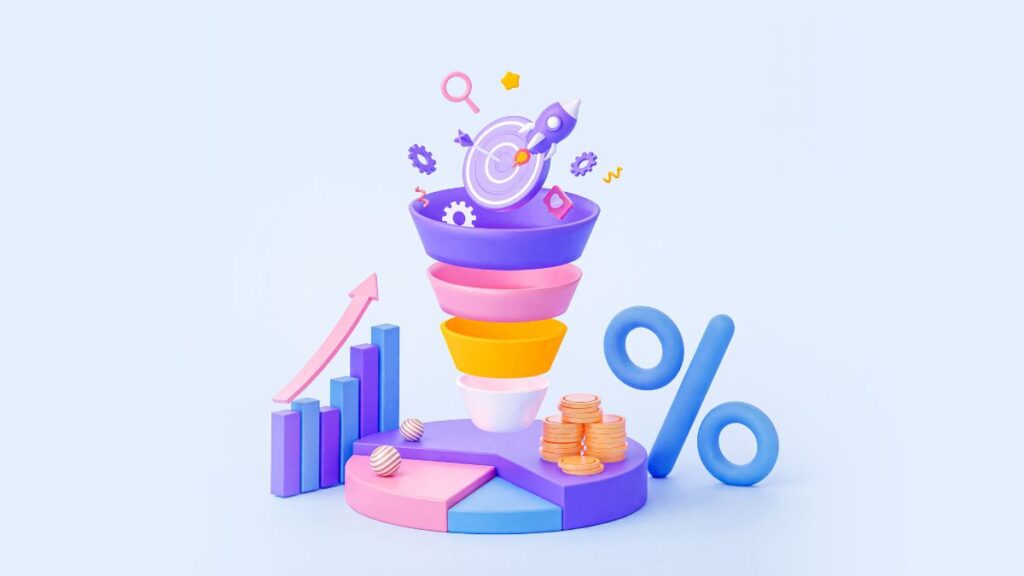Digital marketers face numerous challenges. They’re constantly creating new content, publishing new ads, managing influencer marketing campaigns, staying current on social media, and more all while figuring out how to turn it all into money. However, not all of these efforts result in the same number of leads or sales. As a result, digital marketers are left wondering how to prioritize their work.
In order to be successful in any business, you must understand the strategic value of each action you intend to take over time.
Whether it’s the introduction of a new product, the launch of a new marketing campaign, or the pursuit of a new target audience. One must initially comprehend the notion of ROI or return on investment to understand the strategic value of your profit or loss.
Marketing ROI is a method of calculating a company’s return on investment from marketing expenditure. According to Avery, it is also known by its abbreviation, MROI, or return on marketing investment. (ROMI).
It can be used to evaluate the effectiveness of a specific promotional campaign or the firm’s overall marketing mix.
The money you make from selling a product you created, for example, is your return on investment or investment gains. The initial cost or materials used to create or provide something to customers, as well as the money spent marketing the product, are considered investments. The money you make from those customers is your return on investment.
Evaluating the expected return on marketing investment at the organizational level can aid in the direction of company choices and the optimization of marketing efforts.
Understanding the ROI generated by a campaign is beneficial for marketers:
Justify Marketing Investment

Allocating resources and funds for marketing efforts is consistently listed as a prime focus by CMOs.
To guarantee funding and resources for advertising projects, existing branding splurge and cost estimates must be supported at the executive level. To do so, marketers must accurately determine the ROI of their marketing efforts for the organization. For example, they must understand whether native ads are increasing conversions and ROI while display ads are not. Budgets can then be properly allocated from there.
ROI can be calculated for marketing purposes as well. For example, if you want to know whether a marketing campaign is worthwhile, you could calculate the ROI based on projected earnings or revenue after the campaign ends.
Establishing Baselines and Measuring Campaign Success
The capability to evaluate campaign performance and develop benchmarks that can be used as a basis for future developments is an essential component of any successful marketing team. Keeping this in mind, accurately measuring ROI assists marketers in doing both. Marketers can better identify the right mix of offline and online campaign efforts by understanding the impact of individual campaigns on overall revenue growth. Furthermore, steadily measuring ROI enables advertisers to maintain benchmarks to quickly measure their accomplishments and adjust plans to enhance influence.
Written Material
Our 2018 State of Inbound Report found that 82% of marketers who blog experience an advantageous ROI from their Inbound Business model.
Even though generating a blog article was far less costly than generating a video, written content can still cost you time and money. If writing is a component of your marketing strategy, involve time-related costs, cost of production, and marketing expenses in your overall budget. To convert time into money, keep track of how many hours an employee worked on the project and multiply that amount by their wage.
Marketing efficiency in comparison to competitors. Monitor your competitors’ MROI to see how your company stacks up against the competition. While MROI is not usually made public, managers can estimate MROI for a competitor using published financial statement data.
If your blog links to a landing page, use a tracking URL rather than a standard page URL so you can see how many visitors come directly from the blog.
You can determine how effective your strategy is by tracking visits, leads, and customer conversions related to a blog post or article. If you’re crafting ROI-generating material but discover that the writing process occupies too much time, you need to look for strategies to shorten it. If you’re not experiencing an ROI, you should reconsider your plan or switch to another marketing channel.
Advertised Content
When a brand lacks the time or resources to create its own branded media, it may pay some other individual, editor, or corporation to start creating sponsored posts on its behalf. While hiring someone outside of your office might very well charge one’s business money, consider the additional hours your crew must devote to work on other productive projects if they are not required to create content.
Since you don’t have to monitor your own staff members’ labor costs, you should use the ROI formula to evaluate the way the fee for advertorials needs to be compared to the amount of cash that you earned from the commercial.
Paid Social Media Marketing

If a company has an audience that regularly uses social media platforms such as Facebook, Twitter, or Instagram it should consider boosting one of its posts so that it appears in the newsfeeds of target audiences.
You can set a goal or audience target, a time limit, and a budget for most social promotions. Tracking your ROI can help you determine whether or not your social boost strategy is effective. As well as the types of posts that yield the best results.
Examine what’s working.
Digital marketing ROI can also assist you in making more specific and nuanced decisions. Measuring digital marketing ROI can reveal which aspects of a marketing strategy are working. Also, which aren’t, as well as which changes helped and which did not. Something isn’t working if you’re spending more money on a campaign than you’re earning. With this data, you can get ideas for new campaigns and refocus your efforts on the top channels.
The budget should be allocated strategically.
You can reallocate your cash to those channels once you’ve discovered which digital marketing campaigns and activities are delivering the highest ROI. Simultaneously, you can phase out the initiatives with the lowest returns and allocate even more resources to successful strategies.
Estimating Brand Exposure
This means allowing you to determine what is and is not functioning.
Once you assess your marketing ROI, individuals are able to determine which advertising strategies are effective for your company. It is indeed hard to determine if these strategies are effective unless you track how they benefit your business.
You can learn what drives sales by calculating the ROI of your digital marketing strategies.
This data can assist you in revising campaigns to achieve better results. It could be that your low ROI is due to the ad copy or targeting rather than the tactic itself. Estimating your ROI would then enable you to discover what works and what doesn’t, allowing you to make changes to improve your outcomes.
How to Calculate ROI

Depending on your industry or focus, there are several methods for calculating return on investment. However, in general, you can use the following basic ROI formula to calculate your investment gains:
(Revenue – Investment) / Investment = ROI
Consider the following simple example.
Assume you want to launch a $1,000 marketing campaign. You earn $4000 in profits after running the marketing campaign, which you can directly attribute to your advertisements. When you plug those numbers into the formula, you get:
($4000 – $1000) / $1000 = 3.
This answer can be written as 3:1 or multiplied by 100 to get your ROI expressed as a percentage. In this scenario, the return on investment will be 300%.
In the preceding example, you receive three times the initial investment; in other words, you made good returns and the marketing campaign was a success!
Here’s another one. A new car costs $34,000 on average; if you sell it for $30,000, your ROI is:
($30,000 – $34,000) / $34,000 x 100 = -11.7%
In this case, your ROI is negative, indicating that you lost money.
In general, the higher your ROI exceeds 100%, the better. If your ROI is only 100%, you have effectively made your initial investment when all costs are considered.
ROI Constraints
Despite its importance, it is important to remember that ROI has some limitations. The most significant is the emphasis on short-term value rather than long-term potential value.
For example, calculating the ROI for a brand awareness campaign will most likely yield a very low percentage. If you only consider this figure, you might conclude that the brand awareness marketing campaign was not worthwhile.
That is not always the case, however. Increasing brand recognition is analogous to improving your credit score. Users won’t find instant results after having applied for a credit card because it takes at least six months to develop your 1st credit rating. Likewise, brand recognition campaigns do not always yield immediate or significant profits. However, if done correctly, they will boost the worth of your business time period.
A successful brand awareness campaign can result in increased traffic from organic searches to your company’s website, increased sales in the long run, and a better overall corporate reputation. All of those advantages are priceless, even if you can’t put a monetary value on them.
As a consequence, the investment return is unable to ascertain if one action is better compared to another. Instead, merge ROI with certain other KPIs and performance measures as a strategic instrument.
How to Improve ROI
There are numerous methods for increasing the return on investment for products, marketing campaigns, and other efforts.
To begin, you should experiment with various marketing channels. It is particularly relevant when attempting to promote a product or service to a fresh market.
Don’t just use pay-per-click advertisements, for example. Instead, use social media ads, video marketing, content marketing, and mobile marketing strategies to increase the potential reach of your campaign.
Alternatively, strategies such as A/B testing may allow you to increase your annual ROI. A/B testing entails presenting two identical versions of a webpage, email, or advertisement to a similar group of customers or website visitors. You compare the performance of the two pages or advertisement versions. When you have this information, you can replace all of your remaining pages or advertisements with the higher-performing version for greater efficiency and better results.
Of course, because ROI is inextricably linked to how much you initially invest in a project, you can increase ROI by spending less. This isn’t always an option. However, if you can reduce manufacturing costs for your brand’s staple or flagship product, you’ll make more money in raw profits with each sale because each product costs less to produce in the first place.
Finally, return on investment is just one metric to consider when deciding which business decision is best for your objectives. Measuring ROI accurately is critical to understanding the value of a product launch or marketing campaign; use it on a regular basis to save money where possible and spend money where it adds the most value.
Set goals and stick to them.

Before beginning any digital marketing campaign, set attainable and relevant goals. They might be connected to ROI or additional digital advertising KPIs, and all of them should be within the scope of your budget. As your campaign proceeds, keep track of these indicators to see if there are any discrepancies or if each component of your campaign is doing properly.
These areas of opportunity can help you refine your current campaign or create an entirely new one that is more tailored to your target audience.
Concentrate on the channels that are most effective for you.
Concentrating on fewer channels may yield a higher ROI. Determine which channels, such as social, SEO, PPC, or email, are most effective for your brand first. Then consider how to reallocate your marketing budget to maximize your returns.
Test and improve
They might be connected to ROI or additional digital advertising KPIs, and all of them should be within the scope of your budget. As your campaign proceeds, keep track of these indicators to see if there are any discrepancies or if each component of your campaign is doing properly.





